- 1 Week trek
- Camping
- Fall Treks
- Moderate Grade Treks in Himalayas
- Sikkim & Darjeeling
- Sikkim Treks
- Spring Treks
- Summer Treks
- Winter Treks
Dzongri Trek:
Without a doubt Dzongri trek is one of the most significant trails for you to taste the flavours of the Eastern Himalayas. Dzongri Top offers a surreal 360 degree view of the entire Sikkim & Darjeeling Himalayas.
Ranging from Far East stand tall the snow cloaked giants covering the whole North and expands till Bhutan touching horizons of West. Rathong, Kokthang, Frey Peak, Kabru North, South & Dome, Kanchendzongha, Pandim, Narsing, Tinchenkhang, Simvo are amongst them to name a few major ones. The whole trail passes through the core area of the Kanchedzongha National Park, West Sikkim.
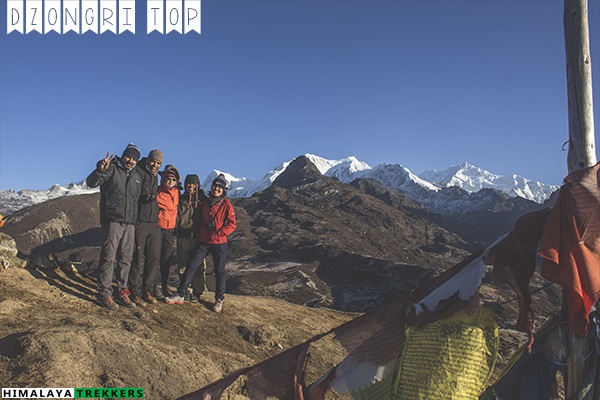

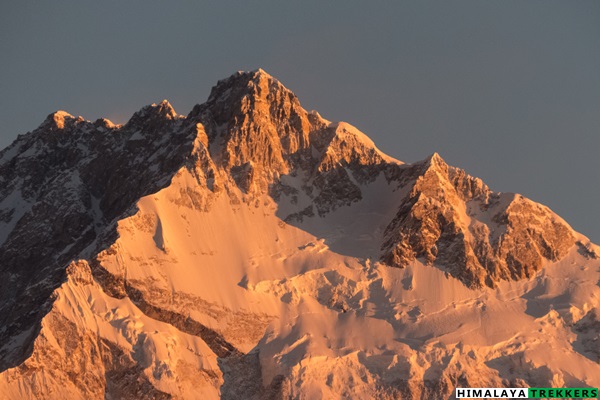

Enroute you cross Temperate Broad-Leaved Forest, Mixed Coniferous/Sub-Alpine Forest and stand on the verge of land covered only by Alpine Scrub and Grass. Needless to say that this diverse bio reserve falling under the Group 12 Himalayan Moist Temperate Forest is filthy rich by a vast range of flora and fauna. The months of April –May are ripe to visit this sanctuary to see various species of rhododendrons lit brightly all around the corners.
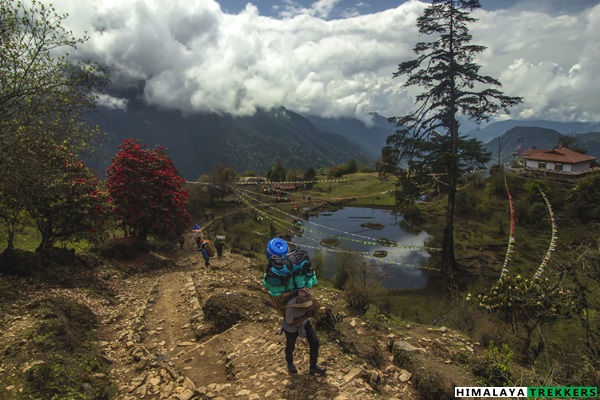

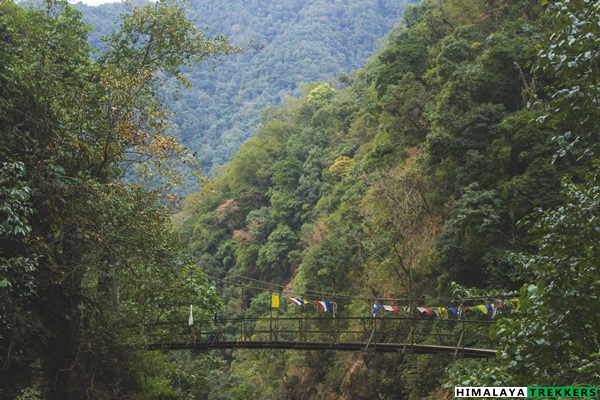

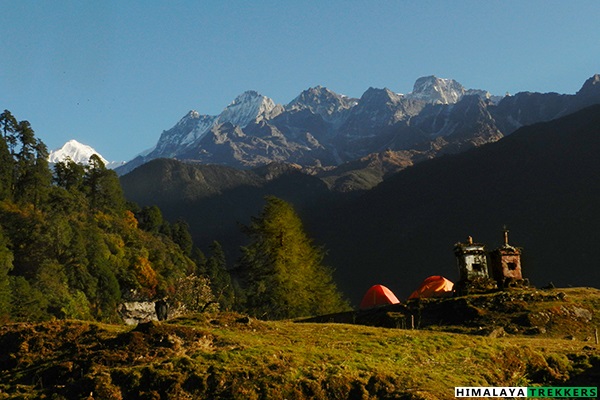
On mountains, valley clouds move upward in the afternoon and common in the afternoon. Here is a small time lapse taken at Tsokha.
We have split the long and steep climb from Tsokha to Dzongri at Phedang. Staying a night at this forest covered beautiful campsite will definitely help you reach comfortably to Dzongri next day.
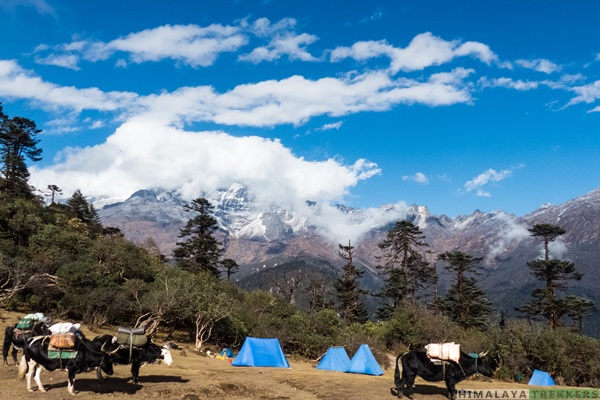
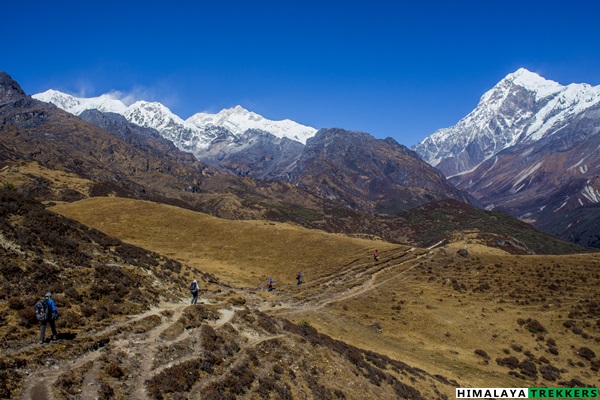
Brief Itinerary for Dzongri trek:
Day 1: NJP/Bagdogra to Yuksom – 160 Km by car – 8 hours. Homestay or lodge accommodation.
Day 2: Trek to Sachen – 8 Km – 4 hours. Camp.
Day 3: Trek to Tsokha – 7 Km – 4/5 hours.
Day 4: Trek to Phedang – 6 Km – 3/4 hours
Day 5: Trek to Dzongri via Deorali Top – 6 Km – 3/4 hours
Day 6: Explore around Dzongri. Climb to Dzongri top for sunrise. After breakfast Visit Laxmi pokhri and back for lunch.
Day 7: Trek back to Tsokha – 12 Km – 5 to 6 hours. Camp.
Day 8: Trek back to Yuksom – 15 Km – 5 to 6 hours. Homestay or lodge accommodation.
Day 9: Yuksom to NJP/Bagdogra – 160 Km by car – 8/9 hours
*** Trekkers need to reach latest by 10 am on Day 1 at NJP/Bagdogra. You will return to NJP/Bagdogra in 8 hours drive from Yuksom on Day 10, i.e. around 4-5 pm. ***
Dzongri trek altitude and distance profile:
The following chart will give you an idea gradient and distance of our Dzongri trek.

Dzongri Exploration day:
Due to relaxed itinerary you will get ample time to explore Dzongri and around. Following is an outline on how you may utilise. Your trek guide will decide as per prevailing weather conditions and based on team performance as a whole.
- On Day 5 you should reach Dzongri by lunchtime. You may consider witnessing sunset from Dzongri top, which is an hours climb from camping ground.
- On Day 6 wake up early, by 4 am latest. You must not miss sunrise from the top. Depending on season sunrise time will vary, earliest being in May, before 5 am, 5:30 am around October and stretching towards 6:30 am in January. Start accordingly an hour before to reach on time.
- You have options to visit the Lampokhri lake another 4 hours round trip from campsite. The trail goes through Dzongri meadows.
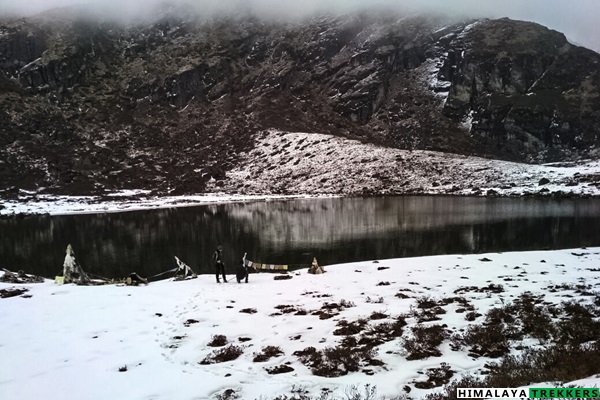
- Dzongri La (4380 m/14365 ft) or the Dzongri Pass is more challenging day hike towards HMI base camp Chaurikhang and Rathong glacier. This is a full day hike from Dzongri campsite and can take 8 hours round trip.
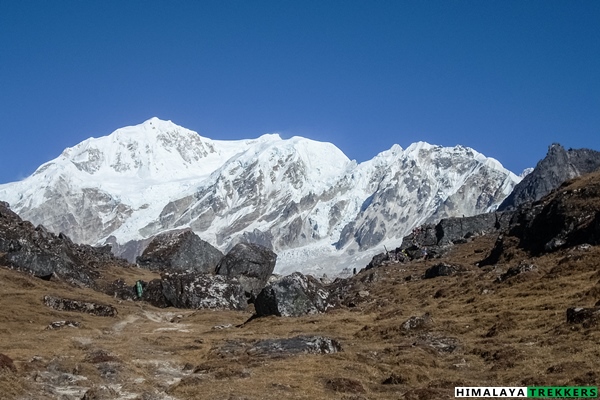
Bird species and wildlife on Dzongri trek:
Visiting bird watchers will find this place most appealing considering the fact that this National Park forms part of the Important Bird Area (IBA) network which contains around 550 species and subspecies of avi-fauna. Some of such species include some flamboyant high altitude pheasants like Tragopan pheasants and Blood pheasants, Tibetan Snow Cock, Tibetan Horned owl, Hill Partridge, Forest Eagle, Falcons, Hawks and even some Lammergeiers. This National Park is also home to a wide range of animals including Red panda, Snow Leopard, Common Leopard, Himalayan Black Bear, Lesser cats, Mountain fox, Kasturi Mriga/musk Deer, Nayan/ Great Tibetan sheep, Bharal/Blue Sheep, Shapi/Himalayan Tahr/, Barking Deer, Martens and Pikas to name few.
Which season to choose for Dzongri trek?
The first being the Spring during April and May – the blooming season. The later season is combined in Fall and Winter, continued from October to February. This tenure boasts cloud-free weather and offers spectacular mountain views.
Season: Being in the Eastern Himalayas this area observes longer monsoon. Clouds start to hover from April and prolong till October beginning. There are two distinct seasons when this year trek is particularly beautiful:
1) Spring/Summer (Apr/May) trek during Rhododendron bloom: April and May is spring time, blooming time. Flowering starts as early as March in the lower elevation, and gradually towards end of spring on higher altitude. Rhododendron and Giant Magnolia are two most famous along with several other wild flower species. Cloudy or misty atmosphere is common during Spring. Though clear mountain views are not uncommon, specially during morning. For bird watching this is certainly a better season to visit.

2) Fall/Winter (Oct – Jan) treks for clear weather: From October to end of November. In the beginning of October clouds start moving out from this region and weather becomes clearer. November is particularly known for its crystal clear views of the mountains. From end of November it becomes very pretty cold at Dzongri. Also being high altitude the chances of snowfall can’t be neglected during late December and January.
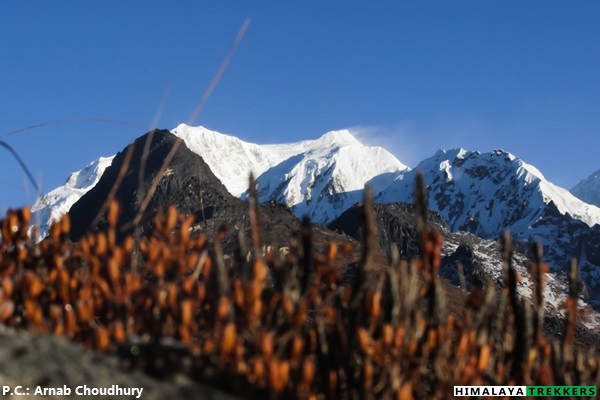
Can I attempt Dzongri trek as my first hiking/trekking on the Himalayas?
The itinerary of the trek is planned in such a way that being a beginner you don’t find it too stressful. While ascending to Dzongri, the trek day duration is not more than 4/5 hours covering maximum of 7/8 Km a day or less.
However, it is always better if you have prior hiking/trek experience(s) at least in Sahyadris or in Western Ghats or perhaps on any trail This is NOT a Difficult but a Moderate grade trek and we do encourage first timers on this trail. But not to forget that this trail takes you to an altitude of about 14000 ft. To minimise the risk (as that any high altitude Himalayan trekking) you must have the following:
A healthy physical condition [as well as mental; You need to adjust and share on mountains :-)] without any known issues related to heart or lungs.
Must be in a fitness training schedule. Your focus should be achieving more cardio vascular output through a regular aerobic training. A minimum of 2 months training is a must that you can walk comfortably on the slope. People will find it easier who are already following a routine. It is it highly advised that you follow a minimum of 6 months routine (weekly 4/5 days of training for an hour or more) if you are not living an active life at present. To know more on how to prepare, click here.
Specialised personal gears like waterproof trekking shoes, warm jacket, wind cum waterproof jacket are must. To read on how to choose the right gear click here.
And last but not the least, you need reliable and experienced support team who know every corner of the trail. In high altitude an unexpected weather can increase the risk many fold. Trekkers who wish to go independently must have an experienced freelance guide and his team to provide support and guidance that you are safely back to trek base.
Dzongri trek temperatures:
Sikkim Darjeeling and surrounding region is known for its moist weather, almost year around. At higher altitude dampness adds on top of the natural cold conditions.
Usually the minimum temperature of a place is attained early in the morning, 3 to 5 am. During Dzongri trek, there are couple of days (one being at Phedang and the other to Dzongri) when you have to leave camp early in the morning. In spring expect the minimum temperature to be around 0°C at Dzongri. In October the temperatures will be similar and temperatures plummet further in late October/November. During peak winter from late December temperature may go down as low as -10°C at Dzongri. Do account strong wind at times which in turn can make you feel colder. This is the wind chill factor and feels like temperature can be as lower than the actual. Temperature inside tent will be around 10°C warmer than that of outside. During daytime the temperature will be cooler and can vary from 10°C to 25°C depending upon season and altitude.
Access to Dzongri trek base, Yuksom:
You need to reach NJP (by train) or Bagdogra (by flight) around the city Siliguri in West Bengal for your Darjeeling or Sikkim trips. Kolkata is well connected to Siliguri through flights and overnight trains and busses (road from Kolkata to Siliguri is not in good condition and may take 15/16 hours!) .
Do carefully check for the latest arrival timings on Day 1 of the itinerary (latest by 10 am) before you book your train or flight tickets.
We will arrange a pickup and drop from NJP/Siliguri to Yuksom and back. This will be shared by the team members on actual basis and you pay directly to driver/owner on spot. Typically a Tata Sumo/Mahindra Maxx type Jeep charges ₹ 6000 one side which can accommodate 6 to 8 people. Tempo Traveller type vans are not available in this route. This cost is NOT included in the TREK FEE.
For details on how to reach nearest railways station/airport and move to trek base independently/public transportation check the details in GETTING THERE TAB.
Permit requirements to enter Sikkim and treks in Sikkim including Dzongri trek:
Sikkim has some restrictions regarding travelling and special permits are a must to obtain. It is a good space to write the details regarding the different permits and fees required by the administration. Also we hope that this section will help those people who want to reach independently to Sikkim. Indians may skip this section if you don’t have a travel plan specifically in North Sikkim.
(A) For Indian Nationals: Trekking permit is required inside Kanchendzongha National park and the local police verification at Yuksom police outpost. Two recent passport size photos, One personal photo ID card with address proof in it (Aadhar/Driving Licence/Voter ID/Passport) along with photocopies of the same are to be submitted along with a self declaration at Yuksom police outpost. Below is a handy guide for those having plan for additional holidays/destinations in Sikkim. Even Indians need Protected Area Permit (PAP) for visiting North Sikkim or Nathu La.
http://www.sikkimtourism.gov.in/Webforms/General/faq.aspx
(B) For Foreign Nationals:
Any foreigner (some relaxation to Nepalese and Bhutanese citizens) will require Inner Line Permit which is recently renamed as Restricted Area Permit (RAP) to enter the boundary of Sikkim.
http://www.sikkimtourism.gov.in/Webforms/General/Essential%20Information/Entry.aspx
- Nationals of Bangladesh, Pakistan, Myanmar, Nigeria and China can only apply for ILP/RAP through Ministry of Home Affairs, Government of India, New Delhi.
- Any other foreign national’s with the strength of valid Passport and Indian visa can obtain the ILP (RAP), Free of cost, at the below check points while entering Sikkim.
1) Assistant Director– Tourism Department , Melli, Near Melli Police Check Post, South Sikkim, Mobile No: 9775453611, 03595-248536, PLS NOTE: ILP issuing time is from 8 am to 8 pm everyday (Though we struggled to keep them stay after 6 pm!)- On the way to West Sikkim (Yuksom, Pelling, Hilley, Uttarey etc)
2) Assistant Director, Tourism Department, Sikkim Tourism Office, Rangpo, East Sikkim phone no: 03592-240818 – On the way to Gangtok and East/North Sikkim.
- If you produce a proper itinerary (additionally if any supporting booking documents) then the authority will usually issue an ILP up to 30 days initially. It can be extended to another 30 days but you to get an extension we need to exit Sikkim and apply again when you re-enter.
- Travellers who arrive initially in Darjeeling (state of West Bengal) has to get the permit from the above two check posts. There is shorter route from Darjeeling to Jorethang via Jamuney (40 Km, 2 hours maximum) but foreigner’s are not allowed to enter Sikkim along this road. You have to go via Darjeeling – Jorbanglow – Teesta route.
- You may obtain an ILP online, but that doesn’t make much sense. This is a document valid only when it is signed physically in any of the above two offices. It takes 10/15 minutes to process the ILP at Melli/Rongpo with the strength of your valid passport and Indian visa.
Foreign national tourists who wish to trek to Dzongri/Dzongri, Singalila/Phoktey Dara (Barsey Rhododendron Sanctuary), Round Singalila Dzongri (Uttarey to Dzongri) will require an additional permit called Protected Area Permit (PAP, often referred as Trekking Permit). This is issued to a minimum group of 2 persons or more from the following office on strength of signed and valid ILP/RAP.
Adventure Cell of Tourism & Civil Aviation Department, Govt. of Sikkim, Gangtok
http://www.sikkimtourism.gov.in/Webforms/General/pdf/RAP.pdf
(Note: Green Lake trek in North Sikkim requires Alpine Mountaineering Expedition permit, which in turn needs more approvals, time and high expenses. Total 5 different permits are needed from Sikkim state and Delhi for both Indian and foreign nationals.)
If you (foreign nationals) wish to book Dzongri/Phoktey Dara/Dafeybhir trek or any other with us (HT) in Sikkim then:
- We will require at least one additional day to process the PAP/Trekking Permit. This can’t be processed in advance and we can only apply once we receive your signed copy of ILP. This means that you can’t start the trek very next day you enter Sikkim. We would recommend a couple of days in advance.
- Tourist’s who are having plan to visit other places in Sikkim can obtain the ILP as mentioned and send the same to us for processing the Trekking Permit.
- We charge an additional Rs 3000 as Service Charge per person to process the Trekking Permit and to counter the differential of various permit fees inside Kanchendzongha National park for Non Indian nationals. It is indeed expensive to send someone to Gangtok for processing the Trekking Permit and get it back at the respective trek base like Yuksom, Hilley, Uttarey etc.
In simple words it is not difficult to get the required permits to trek inside Sikkim (apart from Green Lake trek) if you (minimum of a group of 2) have couple of additional days to spend in Sikkim before the trek; There are plenty of these places 🙂
Do carry multiple copies (both hard and soft versions) of your recent passport size photos and photocopies of your documents (Passport/Visa/ILP) to avoid a showstopper on mountains!
Click here to view the List of Things to carry in Dzongri trek or Download the PDF
Why treks with HT?
| Duration | 9D/8N |
|---|---|
| Grade | Moderate |
| Physicality | 6/10 |
| Trail Length | 60 Km |
| Highest Point | 4150 m/13612 ft |
| Expertise: | 14 years of on the ground experience |
| Support staff: | Qualified local & office staff |
| Group size: | Small groups up to 10 |
| Insurance: | Travel and Medical insurance policy (covers illness, AMS, evacuation, accidents) |
| Easy Bookings: | 25% Booking Deposit |
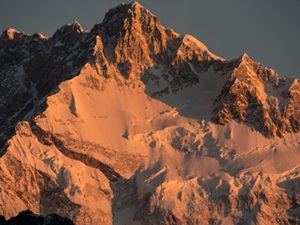
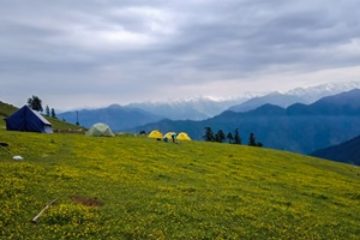

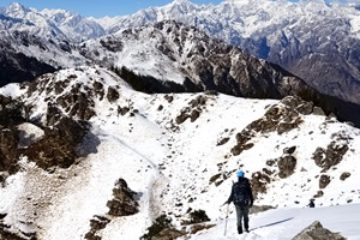
Tour Reviews
We did winter Dzongri trek in Sikkim with Himalaya Trekkers. They arranged everything for us and we were very satisfied. The communication was fast. On the trek we had excellent team – experienced guide Ram from Yuksom and cook Chandra. The food was delicious. Even the trek base – homestay in Yuksom was gorgeous. We did this trek in February, it was challenging, but with the support of Himalaya Trekkers team, we successed .
We had an amazing time with Himalaya Trekkers. Wonderful communication beforehand, marvellous guide Ram and great support team. Beautiful surroundings. Thank you!
Leave a Review